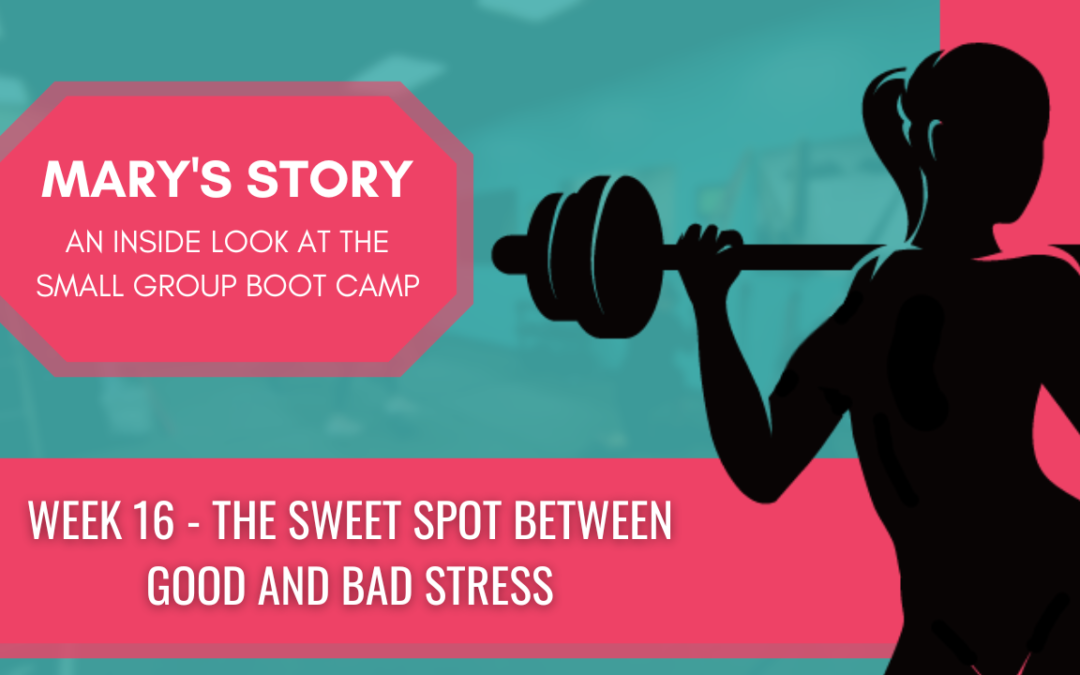
by David Minishian | Apr 16, 2023 | Mary's Small Group Boot Camp Journey
On Friday morning, Mary told her coach that she was tired.
Between a couple unexpected bills, a sick family member, and a big event coming up, sleeping has been difficult.
With her stress levels through the roof, a sleep deprived Mary wasn’t motivated to workout.
“That’s okay,” her coach said, “Take it easy today. Sometimes stress is a good thing, but when it disrupts your sleep, mustering up the energy to exercise can be challenging.”
Mary seemed confused.
“When is stress ever a good thing?” she asked.
Good Stress, Bad Stress
Coach explained that bad or negative stress will overwhelm you, wear you down, and be harmful to your health.
Bad stress is feeling swamped by responsibilities, overloaded by how much is on your plate.
When this happens, you can address it by practicing stress reducing coping exercises, taking some things off your plate, or seeking help until you’re capable of handling it.
On the other hand, good stress has a positive effect on you.
Working out is an example that places good stress on the body. This type of stress makes you stronger than before and helps you build the resilience to overcome the stress next time.
Good stress can also be the excitement you feel for a new activity, like joining our program.
However, too much of any good thing can be bad. In your workouts, you want to put the right amount of stress on your muscles (good stress) without going too far and causing excessive damage (bad stress).
Resistance training is a positive stressor on your body, but lifting too heavy too fast can be a negative stressor as it increases your risk of injury.
A coach will make resistance training safe and guide you through the progressions of lifting at a challenging rate. Progress too slowly and there won’t be enough good stress to overcome and achieve progress. Progress too quickly and you won’t be able to handle that amount of stress, sometimes to the point of injury.
Handling Stress
Physical stress and mental stress are very different, but you can handle mental stress similarly to how physical stress is addressed in the gym.
- Don’t be shy to ask for help (aka a spotter or coach)
- Only tackle what you can handle
- Surround yourself with others who support you
- Listen to your body
Sculpt Fitness is more than a place to sculpt your body.
It’s a place to be challenged and grow both physically and mentally.
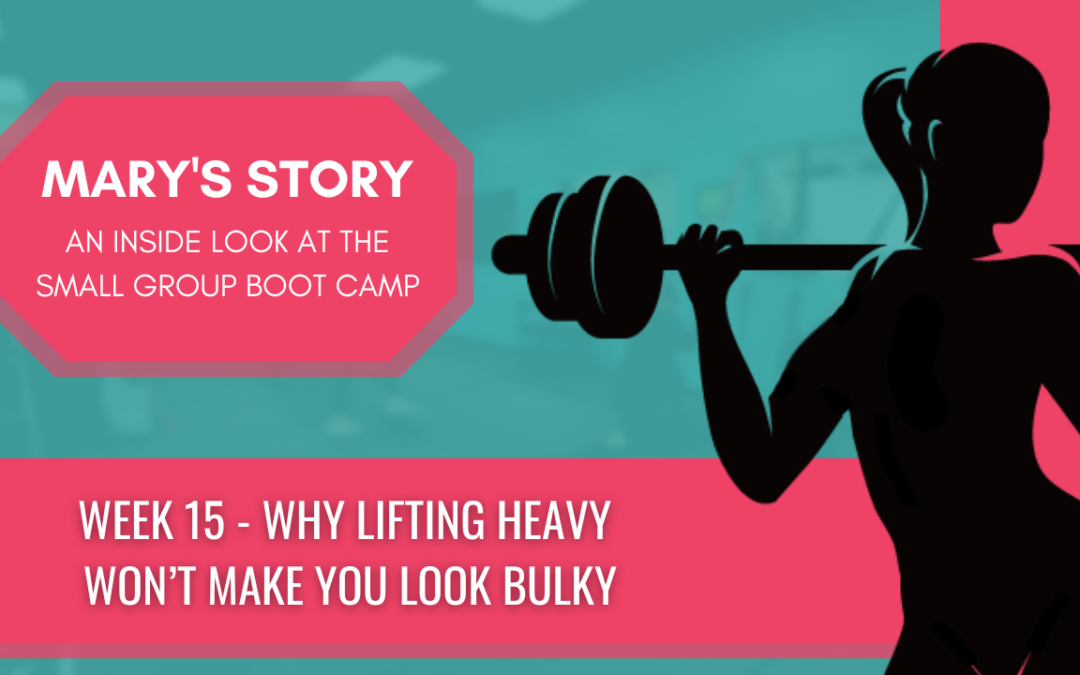
by David Minishian | Apr 8, 2023 | Mary's Small Group Boot Camp Journey
Mary has been on her hypertrophy training program for a few weeks now, and she’s starting to notice some changes in her body. But not the changes she expected.
“I always thought that lifting heavier weights would make me look bulky,” Mary said to her coach. “But I’m feeling stronger and more toned than ever before.”
Results of Lifting Heavy
Her coach smiled. “That’s because the myth about lifting heavier weights making women look bulky is just that – a myth. The truth is that lifting heavy weights is essential for building lean muscle mass, which helps to increase your metabolism and give you a toned, defined look.”
Mary was a little surprised. “So why do some women that lift heavy look bulky?”
“That’s a great question,” her coach said. “Women, who look bulky, are doing more than lifting heavy. This may include heavy resistance training 5-6 days a week for years, eating in a caloric surplus (gaining weight), and/or using performance enhancing drugs. Yes, women can look bulky, but it won’t happen without purposeful intention. Lifting heavy alone is not enough to look bulky.”
“Ahh that makes sense,” Mary replied. “One more question – Why did lifting lighter weights for more reps not give me the toned look I’m seeing now?”
Coach continued to explain that “While lifting lighter weights for more reps can be great for muscular endurance, it doesn’t stimulate the same amount of muscle growth as lifting heavier weights for fewer reps. Less muscle, more body fat, less toned.”
Mary paused.
She was thinking about all the times she had avoided picking up heavier weights at the gym, out of fear of looking bulky or masculine. But now she was starting to see the benefits of challenging herself with heavier weights.
“I’m really happy that I decided to join the Small Group Boot Camp in January. Feeling a difference in my clothes and seeing my body tone up has been encouraging.Thanks for taking the time to explain the why behind what I’m doing. It helps to understand the reason.”
Her coach nodded. “That’s what I’m here for. You keep putting in the work, and I’ll keep supporting you and guiding the way.”
As Mary left the gym that day, she felt a newfound sense of confidence in her abilities. She knew that lifting heavier weights would continue to be a challenge, but she was excited to see where this journey would take her. With her coach by her side, she was ready to tackle whatever obstacles came her way.
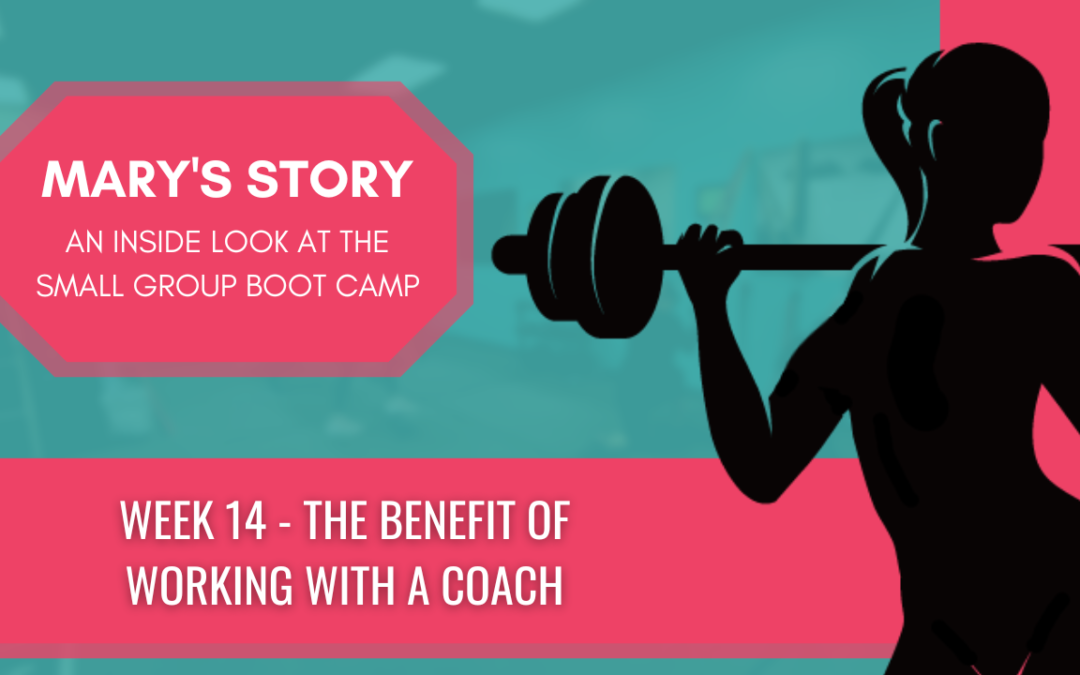
by David Minishian | Apr 2, 2023 | Mary's Small Group Boot Camp Journey
At the end of March, Mary was scheduled for her 3 month weigh-in and progress assessment.
Wow…3 months went by fast.
Despite the setback of being sick, Mary stuck to her dietary changes, showed up 4x a week, mostly slept 7 hours a night, and learned how to progressively increase the difficulty of her workout routine to drive results.
Her clothes fit better.
Her energy levels are higher.
And she’s spending more outdoor activity time with her family.
Keeping these wins top of mind, Mary steps on the InBody scanner.
Working With a Coach
Her weight pops up…down 2.1lbs.
After her 1st month Mary lost 2 lbs, and it was hard to accept. Now she continues with the scan without hesitation. She grabs the handles and waits for the body fat percentage to finish calculating.
Down 2.3%.
Mary looks up at her Coach, “What does this mean?”
“Let’s go through the numbers together,” Coach replied.
“In total you have lost 9.5lbs and 6.5% body fat in 3 months. This translates to losing 14.6lbs of fat and gaining 5lbs of lean body mass.”
Mary was happy with that outcome, but still a little stuck on why her total weight loss slowed down recently.
Coach continued to explain,”You recently made a programming change from endurance to hypertrophy. This change is helping you build and retain more muscle mass. However, this process requires more water to be retained by your muscles to aid in the repair. You’re seeing this additional water on the scale. Between the previous scan 5 weeks ago and now, you lost 2.1lbs, but the amount of fat lost was 4.6lbs. The reason you aren’t seeing 4.6lbs lost on the scale is because you gained 2.5lbs of new muscle and water.”
“Okay, that makes sense. Should I change anything I’m doing?” replied Mary.
“No, stay your current course.”
Coaching moments like these are crucial to Mary’s long-term success.
Without a coach who knows how the body works and responds to different training programs, Mary could have misinterpreted her results and felt discouraged that her hard work wasn’t paying off.
By having a coach guiding her, Mary has stayed on the right track and spent her time and energy on what matters most.
A coach’s support is more than a source of accountability and encouragement, but a professional guide to keep you focused on the path to success.
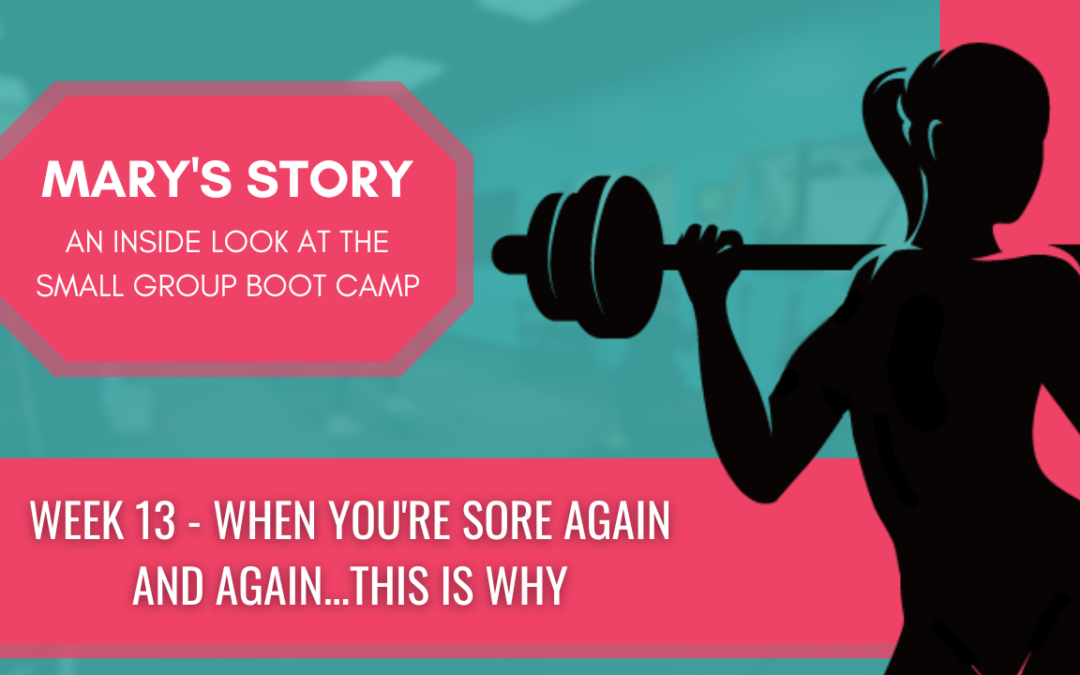
by David Minishian | Mar 26, 2023 | Mary's Small Group Boot Camp Journey
It’s been a week since switching from muscular endurance to hypertrophy training, and Mary is SORE!
“I feel almost as sore as my first week,” Mary said “Why am I this sore again?”
The last time Mary joined a training program, she lifted lighter weights out of fear that lifting heavier would make her look bulky. Her previous coach never addressed this myth, so she plateaued and never trained for hypertrophy which better improves body composition…aka tones and tightens.
This second soreness is new for Mary, but her coach explained that soreness is normal when making a program change.
It’s called DOMS.
What is DOMS?
DOMS or Delayed Onset Muscle Soreness occurs after performing an unfamiliar exercise or increasing exercise intensity. It begins 12 to 24 hours after exercise and peaks in intensity between 24 to 72 hours.
Typically, soreness subsides within a week, but if it doesn’t or gets worse, you should seek medical attention.
How to Interpret DOMS
It’s common to view DOMS as an indicator of progress.
It’s NOT.
DOMS is an indicator of CHANGE. Not a good workout.
Soreness can be good sign when expected, but being sore all the time or too often means the body is not adapting. This can happen for several reasons including overtraining, an inconsistent exercise routine, nutritional deficiencies and a lack of sleep.
Muscle soreness should diminish during the training phase and spike when a change is made. Reduced soreness over similiar subsequent workouts is an indicator that the body has adapted and overcame the training stimulus better than before.
DOMS is not harmful to your body, but it will create discomfort and maybe even limit your next workout.
Reduce DOMS
Here are a few tips to reduce DOMS:
- Consume Enough Protein, Carbs, Fluids, and Electrolytes Before and After Training
- Massage the Muscles or Foam Roll within 2 Hours of Training
- Actively Recover – Keep Moving through a Full Range of Motion
- Use NSAIDs (Pain Relievers) Sparingly and When Appropriate
Some soreness is part of the process.
The more you get to know your body, the more familiar you’ll become with different levels of soreness and how to respond.
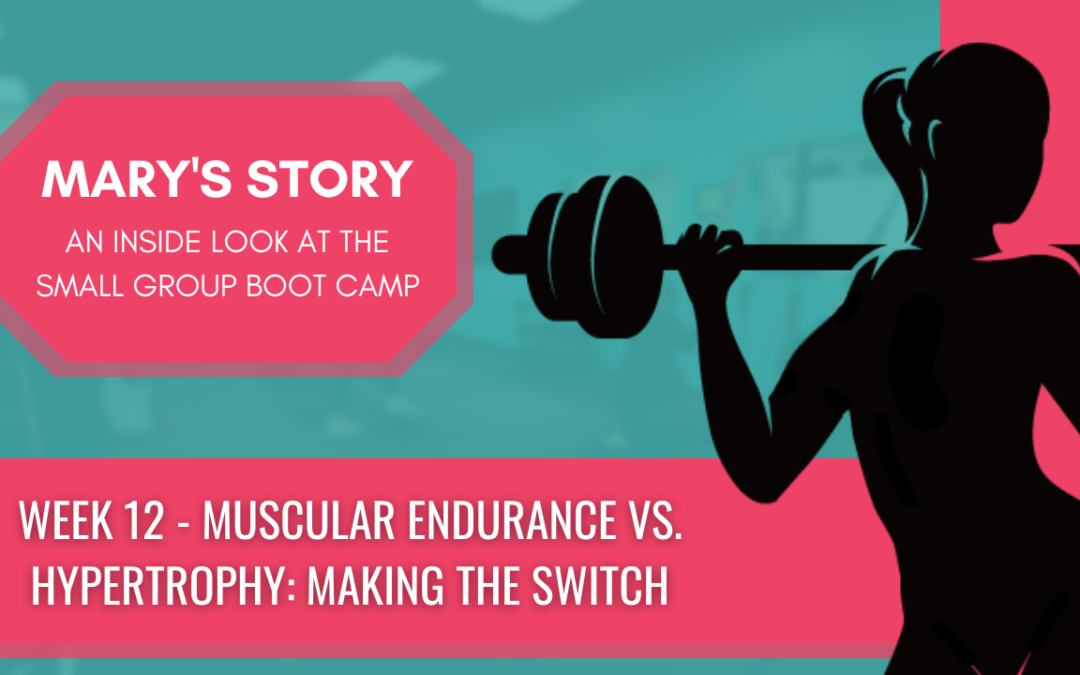
by David Minishian | Mar 19, 2023 | Mary's Small Group Boot Camp Journey
Mary schedules her classes for the week when a message pops up on her phone:
“You Did It Mary! You have completed 40 workouts! Check in with your Coach to discuss the next steps in your programming!”
Endurance vs. Hypertrophy Training
At class Coach explained that Mary is ready to switch her training protocol from prioritizing muscular endurance to hypertrophy.
Training for muscular endurance improves the muscles’ ability to lift weights for longer periods of time, while training for hypertrophy means focusing on building bigger muscles and/or preserving muscle tissue during a weight loss goal.
Yes ladies, the booty is a muscle and it will grow.
A great beginners program starts with prioritizing muscular endurance using lighter weights and higher repetition to develop a strong weight lifting foundation. This initial phase with a lighter load improves a person’s familiarity with the fundamental movements, prepares their body to lift heavier weights, and reduces the risk of injury with the increasing loads lifted during a hypertrophy phase.
Here are the main changes that Mary is making in the Small Group Boot Camp to transition from endurance to hypertrophy.
1. Weight/Load
Moving up the weights used is the most noticeable difference. She wants to choose a weight that’s challenging to lift. If the weight is too light, she won’t get the best results possible because it will be difficult to reach near failure. Reaching near failure, struggling to complete another repetition at the end of a set, promotes the most muscle growth.
2. Repetitions
12-20 repetitions per set is used when training for muscular endurance. However, for hypertrophy Mary wants to lift 8-12 repetition per set. With the heavier weights it should be hard to perform more than 12 repetitions. If Mary is able to lift the weight used for 14-15 repetitions, it’s time to go heavier so she stays within the 8-12 rep range.
3. Rest
It’s time to increase the duration of rest breaks. Shorter rest breaks of 15 to 30 seconds use an energy system that improves muscular endurance. With the switch to hypertrophy, Mary’s rest breaks will increase to 45 to 90 seconds between sets. These longer rest breaks allow her to better recover between sets and continue lifting the heavier weights set after set. To achieve this longer break in class, Mary should stop once she reaches her goal repetitions and use any extra time to recover. She should also skip the sprints and rest instead.
It’s a common misconception that we need to “change up” the exercises to make further progress.
Instead, changing how Mary executes the exercises will result in preserving muscle tissue and targeting fat loss.
Mary has officially reached Stage Two of her programming!
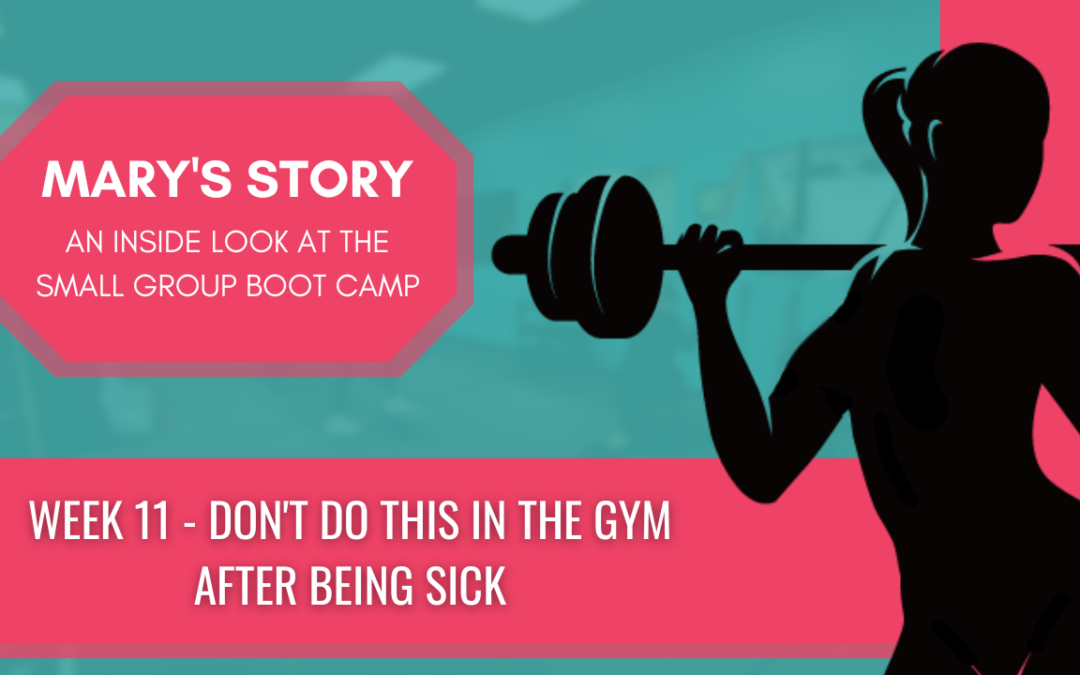
by David Minishian | Mar 12, 2023 | Mary's Small Group Boot Camp Journey
Mary is feeling much better this week and is back at the gym.
Her recovery was better than that of previous illnesses. She noticed that symptoms didn’t drag out for weeks this time around.
Maybe she was lucky…or maybe she’s reaping the benefits of a strengthened immune system.
When you’ve been exercising consistently, making nutritious food choices and sleeping well, the body can mount a stronger immune response to illnesses. Even small changes like adding sufficient protein to your diet supports the T-cells, B-cells, and antibodies which make up our immune response, identifying foreign particles like viruses and bacteria and destroying them before they wreck havoc.
Our bodies are pretty cool!
Don’t Do This After Being Sick
After bouncing back so quickly Mary wanted to pick up her exercise routine exactly where she left off.
While it’s exciting to get back in the gym, Coach advised Mary to “exercise” some caution and gradually work her way back to 100% intensity.
We aren’t invincible. Being ill can have side-effects.
After the prominent symptoms of illness subside, side-effects can easily last another 3-7 days including reduced energy levels, dehydration, and slower recovery between workouts.
For these reasons, it’s important that Mary tames her excitement to continue her exercise routine where she left off, but ease into her first week back.
How to Ease Into Training After Being Sick
Here are a few ways she can do this:
- Reduce the weights lifted
- Rest longer between sets
- Skip back to back workout days by putting rest days in between
- Get an extra hour of sleep each night
The key with recovery is listening to your body and responding appropriately.
Too much of anything is never a good thing and that’s for exercise too.
Just focus on doing the right amount of exercise at the right intensity.
You’ll be back at 100% soon enough.





